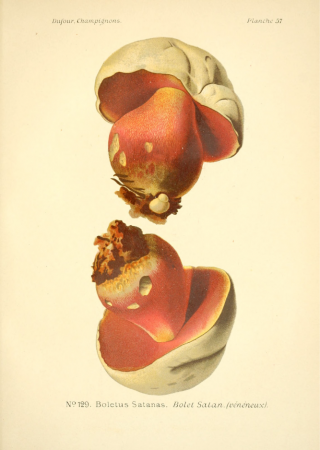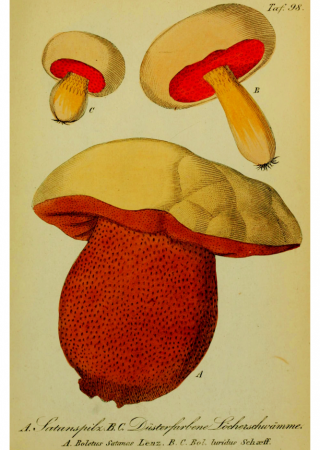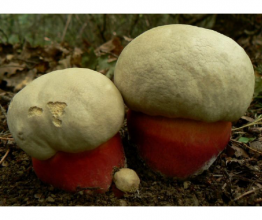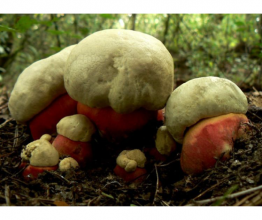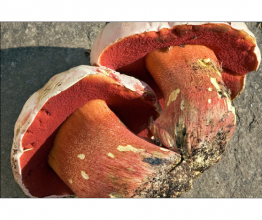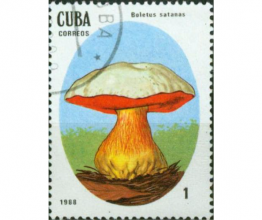Satan's mushroom
- ...it is unclear whether the name 'Satan' refers to its toxicity or its bright red color? It was formerly called the bloody boletus.
- ...its consumption raw is not fatal, but can produce continuous retching for up to six hours, and with only a small amount of ingested material?
- ...after thorough cooking, they are no more poisonous than, for instance, Armillarias?
- ...an old folk term for the Satan's mushroom is "puker"?
- ...some pickers erroneously call the inedible, but non-poisonous Tylopilus felleus a Satan's mushroom?
- ...the smell from old Satan's bodies is often compared to carrion, stinky feet, rotten onions, decayed meat or spoiled cabbage?
- ...less experienced pickers may mistake them for other so-called colored boletus, like the lurid bolete (Boletus luridus) or dotted stem bolete (Boletus luridiformis)?
Basic information:
Division: - Basidiomycota
Class - Basidiomycetes
Maximum height - 15 cm
Distribution - Europe
Type of poison - unknown
Distinguishing marks:
A boletus mushroom, notable primarily by its dome-shaped white to gray cap. The underside of the cap has tubules of yellow to orange to red color. The stem is barrel- to club-shaped, yellow in the upper half, carmine red in the lower half.
This is one of the most common poisonous mushrooms. The most important distinguishing characteristics are the gray cap, carmine-red pores and barrel-shaped stem, carmine red in the center, yellow up beneath the cap and down near the base. It grows from July through September in deciduous forests in calcareous soil. In the Czech Republic it is somewhat rare, although there are places, like around Prague, where it is fairly common. When raw it is strongly poisonous - even small doses cause vomiting, dehydration and general enervation. After thorough cooking, it is essentially harmless, although picking it is still not recommended. It is a rare and beautiful mushroom, better left as a decorative element in the forest.

